‘Verging on the ridiculous?’
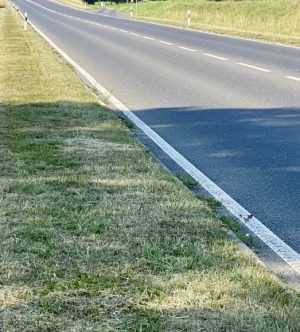
It is clear that wildlife is in decline, not just in the U.K, but across Europe, America - in fact wherever you look. Over the last century, over 90% of meadows have been lost in the U.K. This decline in natural habitats / ecosystems is largely due to urban growth and the expansion & intensification of agriculture. Concomitant with the loss of natural habitats is the loss of wildlife. One particular cause for concern is the ‘disappearance’ or decline in numbers of some many insect species, especially pollinators. The woodlands blog has reported many times on honeybee and bumblebee numbers.` Pollinators, such as bees, butterflies or hoverflies, need to find food (nectar & pollen), plants on which their larvae can feed, sites for nesting, reproduction and over-wintering.
With the growth of cities and agriculture there has been an expansion of transport networks, particularly roads. There are more than 30,000 miles of major roads in UK in 2019, with some 2,300+ miles of that being motorways. Roads clearly have a number of ecological impacts (dividing up the landscape being one) but they also offer ‘habitats’ alongside the road. Roadsides verges have vegetation - which can range from grass to shrubs, woodland and forest. These strips of land serve various functions from providing refuge for pedestrians, temporary parking, improving visibility for road users etc but they also offer ‘homes’ for various plants and animals.
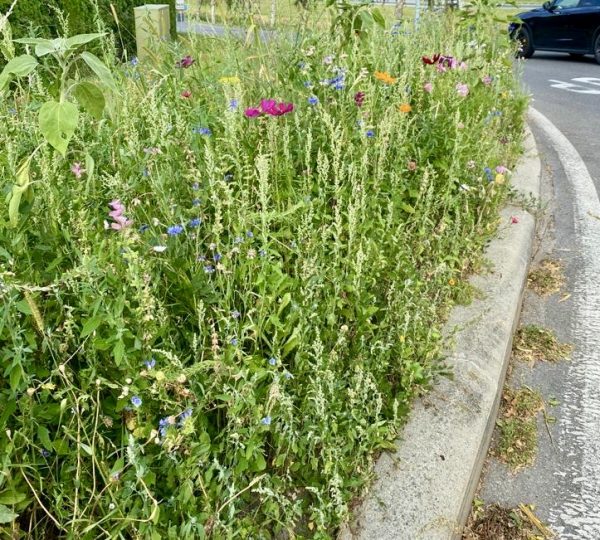
Verges can (and do) offer significant opportunities for wildlife, particularly for those that are mobile and hence can find their way to these small, sometimes ‘isolated’ green patches in the landscape (think of some of those large roundabouts that one encounters). This has been recognised by a number of wildlife organisations, such as Buglife, Butterfly Conservation and notably Plantlife. For many plants that are in decline roadside verges are important as a last refuge. Indeed, Plantlife has been particularly active in raising awareness of roadside verges to promote both plant and animal biodiversity.
In thinking about our declining number of pollinators (and wild flowers) in relation to roads and verges, there are questions - for example:
(1). Which pollinators / insects and wild flowers can be found in roadside verges?
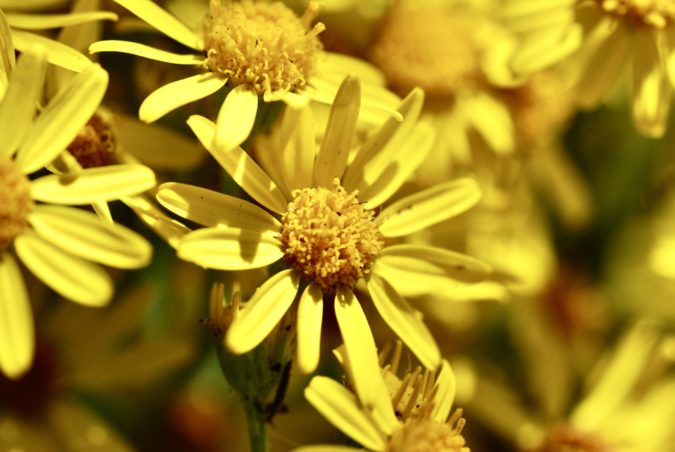
The answer to this depends on the nature of the verge / roadside area. There are dry verges, damp verges, disturbed or recently formed verges, wooded verges, verges with ditches, and some with hedgerows. Roughly, 50% of our native flora can be found in verges of one type or another (see Plantlife report); they are a valuable resource for our plant and associated animals / pollinators. Studies of UK verges have revealed that the number / diversity of pollinators in verges is not that different to that of the adjacent landscape(s), and certainly greater than that of agricultural systems. A study of Swedish road verges found 5 bee, 6 moth and 2 butterfly red listed species. Road sides are also used by various bees for nesting sites.
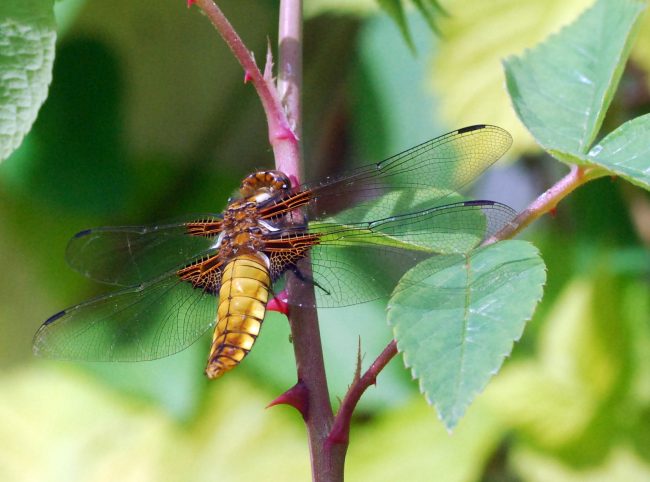
(2). Do roads and road verges offer opportunities for pollinators to move around and disperse?
On one hand roads and their associated verges can offer ‘opportunities for travel’, acting as biological corridors / wildlife corridors along which animal and plant species can move. The Oxford Ragwort took advantage of the expanding railways in the nineteenth century. However, the volume of traffic on the roads can be a problem to the movement of some; low flying insects may be killed by the passing vehicles. Traffic also brings, noise, turbulence and pollution.
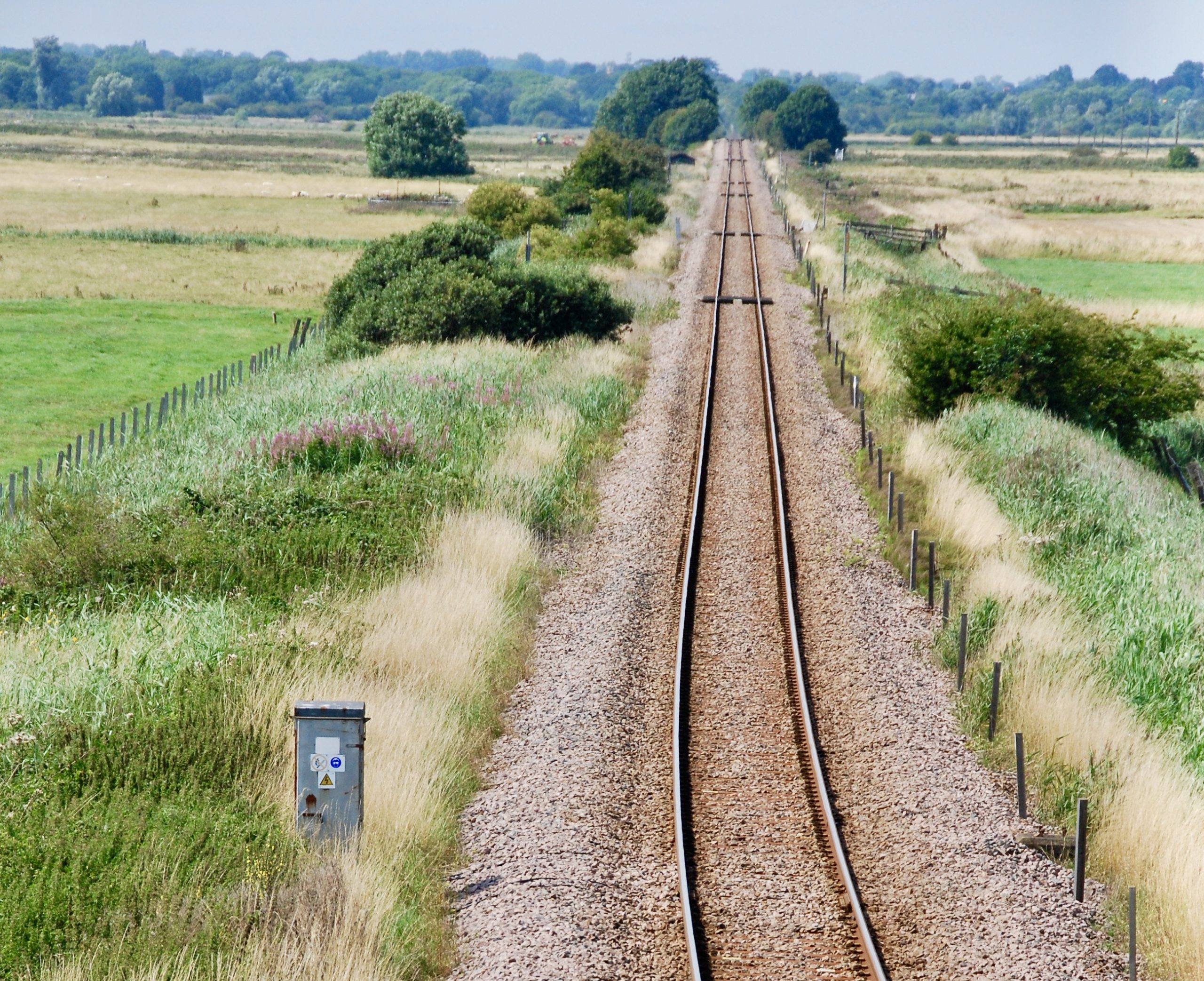
Railway tracks can act as wildlife or biological corridors
(3). How does the management of verges, roundabouts etc. affect the plants and animals ?
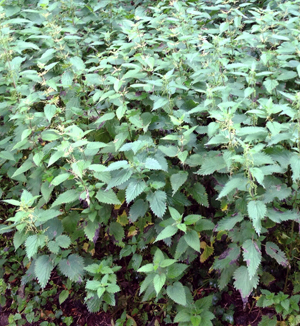 The answer to this is a definite yes. Roadsides that offer a plant species rich habitat have a greater density and variety of animal / pollinator species. However, roadsides / verges that are managed through regular mowing have a reduced number of plant species, which in turn adversely affects insect (and other animal) numbers. Verges are either cut too frequently and / or at the wrong time. The mown grass / cuttings are often left as a layer, which inhibits growth can result in increasing nutrient levels in the soil, which favour ‘botanical thugs’ like nettles. The well manicured verge is now being challenged (especially in these difficult times).
The answer to this is a definite yes. Roadsides that offer a plant species rich habitat have a greater density and variety of animal / pollinator species. However, roadsides / verges that are managed through regular mowing have a reduced number of plant species, which in turn adversely affects insect (and other animal) numbers. Verges are either cut too frequently and / or at the wrong time. The mown grass / cuttings are often left as a layer, which inhibits growth can result in increasing nutrient levels in the soil, which favour ‘botanical thugs’ like nettles. The well manicured verge is now being challenged (especially in these difficult times).
Species-rich verges not only enhance the local visual environment, offering the interest of the road users and passengers but also mean reduced costs of management. By allowing a species-rich grassland to develop allows the biodiversity of verges to increase, which creates resilience and enhances connectivity across the wider landscape. It also means that the vital ecological service of pollination is supported and enhanced.
Plantlife is appealing for help with its "restore our road verges' campaign.
For detailed information on the study of roadside verges and insects - see sciencedirect.com/…/pii/S000632072030745X .
Comments are closed for this post.

It should be a win win, less cutting, more biodiversity and less council tax…. well we’ll settle for 2 out of 3!
Rich
7 September, 2020